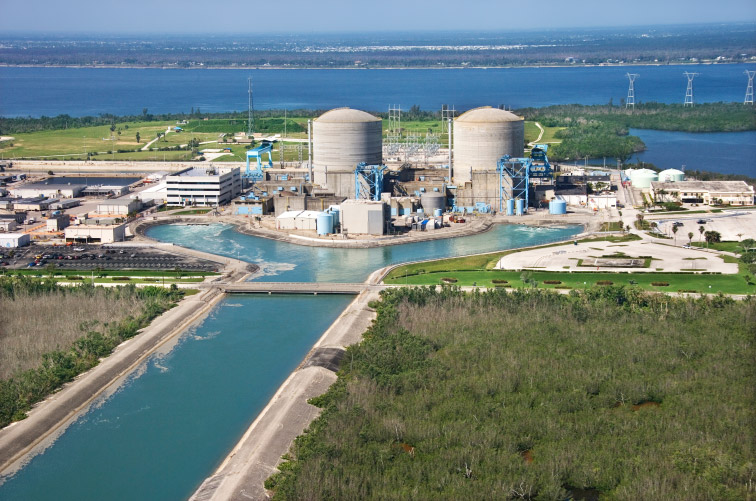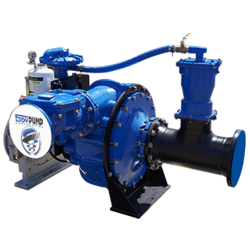Application of EDDY Pump in Nuclear Power Production



Application of Our Slurry Pumps in Nuclear Power Production

- Radioactive Waste Management: Abrasive handling pumps handle radioactive slurries generated during nuclear power plant operations. These pumps are designed to safely transfer and transport the waste to temporary storage or treatment facilities, ensuring the containment of potentially hazardous materials.
- Cooling Water Recirculation: Slurry transport pumps are used in the cooling water systems of nuclear reactors. They help circulate water through the reactor core to absorb heat produced during nuclear fission. These pumps are designed to handle abrasive particles present in the cooling water while maintaining efficient heat transfer to prevent reactor overheating.
- Uranium Mining and Processing: In the nuclear fuel cycle, heavy-duty slurry pumps are utilized in uranium mining and processing facilities to transport uranium ore slurries from mining operations and through various processing stages, such as leaching and solvent extraction.
- Tritium Processing: Tritium is a radioactive isotope of hydrogen used in some nuclear reactors. Heavy-duty slurry pumps handle tritiated water slurries during tritium extraction and processing.
- Fuel Reprocessing: Slurry transport pumps are essential in reprocessing nuclear fuel, as they are responsible for transferring and circulating fuel solutions through different stages of the reprocessing plant.
- Ash and Sludge Removal: In some nuclear power plants, a high solids pump is used to remove ash and sludge generated from the combustion of low-level radioactive waste.
- Emergency Response: Slurry pumps can be used during emergencies, such as nuclear accidents, to remove and transfer contaminated water and materials, mitigating potential hazards and risks.
- Desludging and Decontamination: A high solids pump assists in removing settled sludge and debris from various reactor components and waste storage tanks. They aid in decontamination, ensuring the effective extraction and management of radioactive particles.
- Emergency Core Cooling Systems: Industrial slurry pumps can be part of the core cooling systems in an emergency. They help deliver cooling fluids to the reactor core, preventing potential overheating and ensuring the safety of the nuclear facility.
- Remote Handling Systems: Slurry pumps are employed in remote systems for handling radioactive materials and waste in high-radiation environments. These pumps allow for safer and more efficient material handling without putting personnel at risk.
CALL FOR SALES OR SUPPORT
If you need help with Pump Selection, Sales or Engineering Support
Call 619-345-5446

Application of EDDY Pump’s Hydraulic Dredging in Nuclear Power Production

- Cooling Water Intake Maintenance: Nuclear power plants use large volumes of water for cooling. Submersible hydraulic dredge removes sediment, debris, and aquatic vegetation from the cooling water intake structures, ensuring uninterrupted water flow and preventing clogging of critical systems.
- Reservoir and Pond Maintenance: Nuclear power facilities often have reservoirs and ponds for storing water for various purposes, including emergency cooling and fire protection. Submersible hydraulic dredge helps maintain the water storage capacity and ensures the removal of accumulated sediments and contaminants, maintaining the reservoir’s efficiency and functionality.
- Containment Pond Cleanup: Nuclear power production generates radioactive waste and other hazardous materials that need to be stored in containment ponds. Slurry pump dredge removes sediment, sludge, and solid waste from these ponds, improving waste management and safety.
- Channel Dredging: Hydraulic dredging is essential for maintaining navigational channels in waterways around nuclear power plants. These channels allow for the safe transport of materials, equipment, and personnel, and regular dredging prevents sediment buildup that could hinder navigation.
- Silt and Slurry Removal: During construction or maintenance activities, sediment, silt, and slurry can accumulate in various water systems around nuclear power facilities. A slurry pump dredge clears these materials, ensuring water clarity and environmental compliance.
- Stormwater Drainage: Nuclear power plants have extensive stormwater management systems. Hydraulic dredging equipment helps remove debris, sediment, and pollutants from stormwater ponds, ensuring adequate drainage during heavy rainfall and preventing environmental contamination.
- Decommissioning Activities: As nuclear power plants reach the end of their operational life, submersible hydraulic dredge can remove sediments and contaminants from various water bodies on-site, contributing to decommissioning.
- Emergency Response and Spill Cleanup: In an accident or spill that releases radioactive materials, hydraulic dredging may be used to quickly and effectively remove contaminated sediment and prevent further dispersion of the contaminants.




